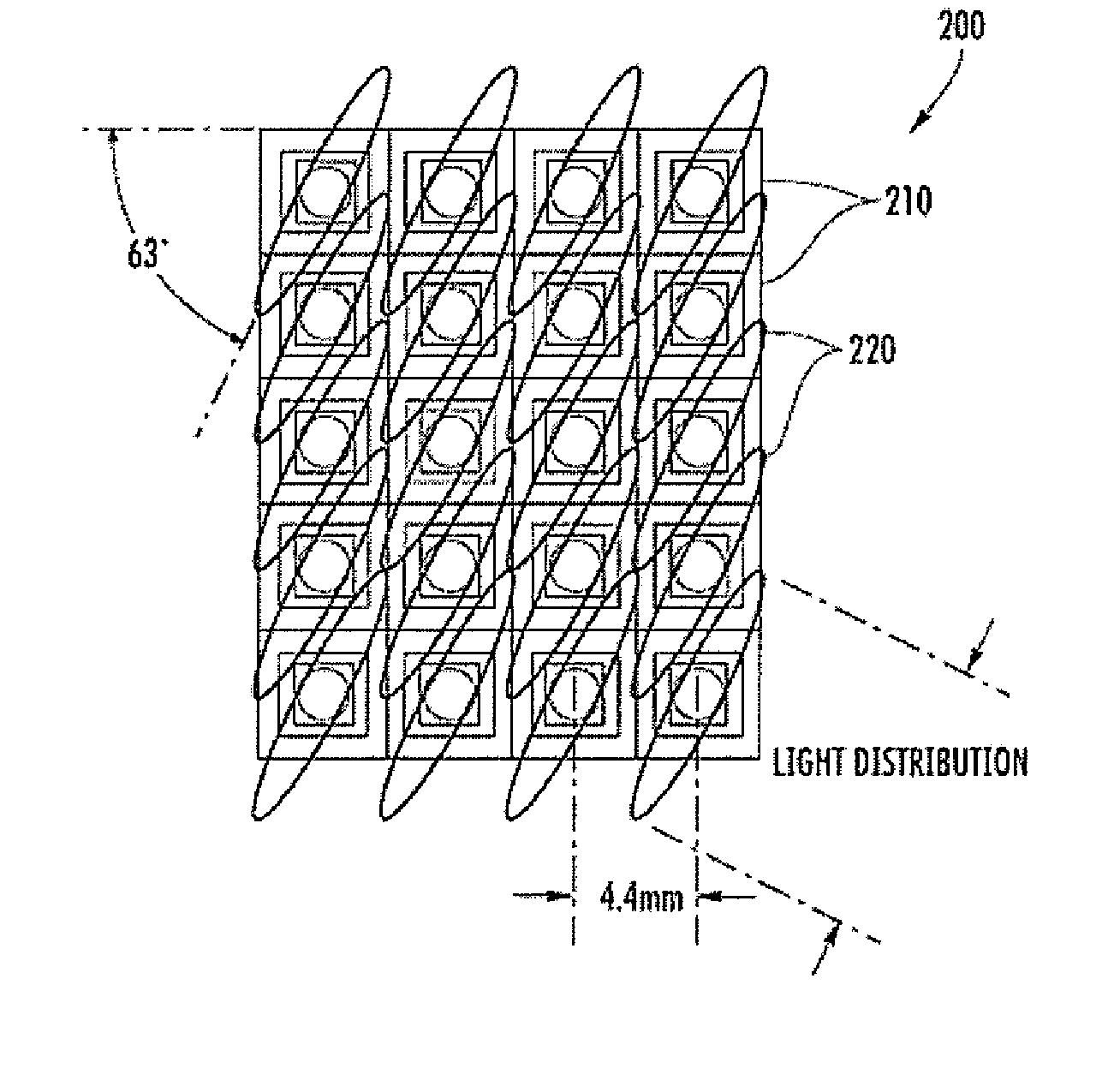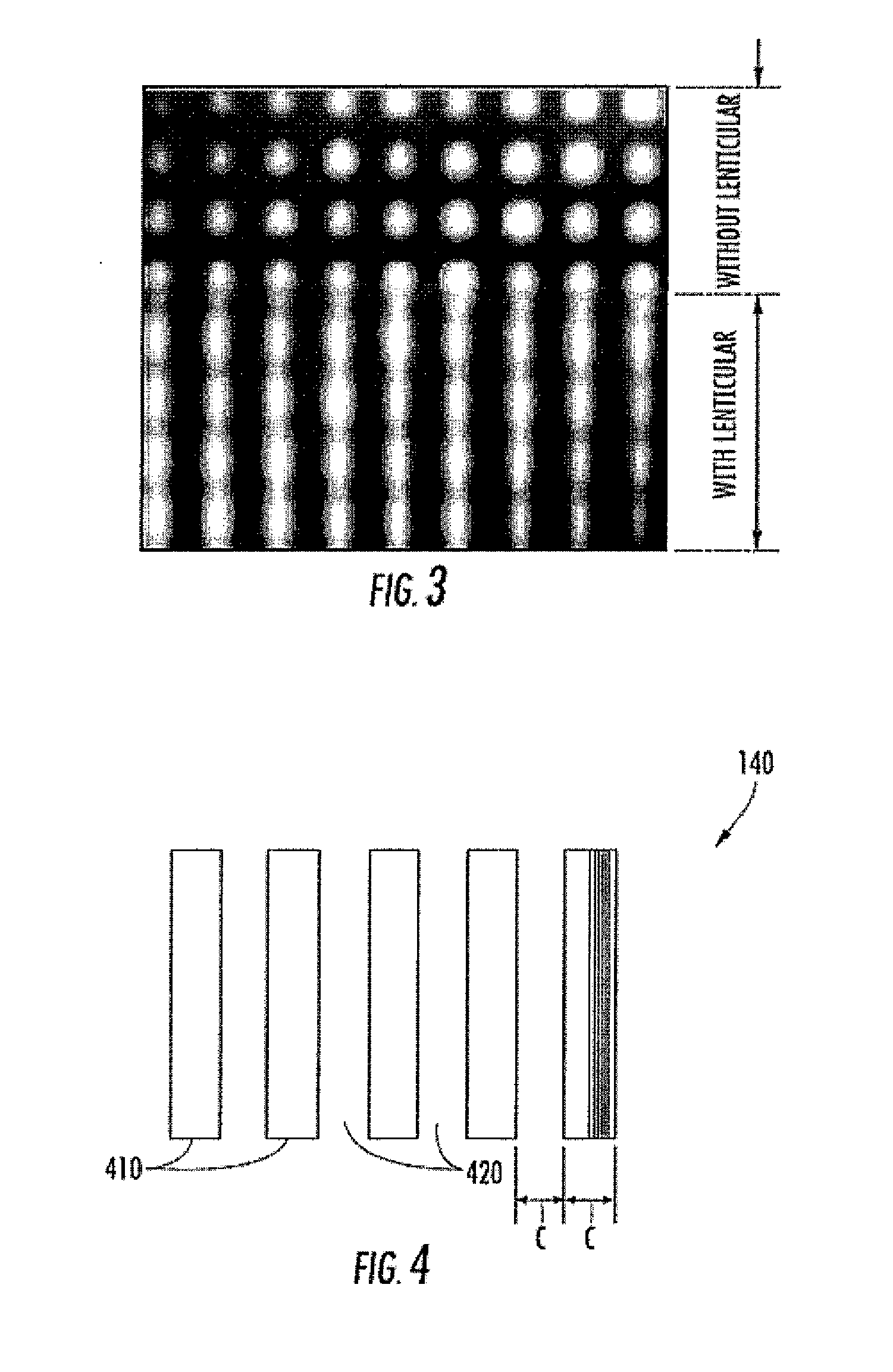Three-dimensional television display
a technology of three-dimensional television and display, which is applied in the field of three-dimensional lcd display, can solve the problem of limited design to a small number of viewers
- Summary
- Abstract
- Description
- Claims
- Application Information
AI Technical Summary
Benefits of technology
Problems solved by technology
Method used
Image
Examples
Embodiment Construction
[0035]FIG. 1 illustrates a side view of 3D display device 100 according to an exemplary embodiment of the present invention. As can be seen in FIG. 1, the 3D display device 100 comprises an LED display 110, a lenticular sheet 120, a polycarbonate board 130 and a parallax barrier 140. In the exemplary embodiment, the LED display 110 itself is a conventional LED screen having a plurality of LED arrays with LED chips behind the television screen. The LED chips in one embodiment are surface mount RGB LEDS. One or more of the LEDs from the LED arrays are driven together to form pixels (e.g., a cluster of red, green, and blue diodes are driven together to form a full-color pixel). As will be discussed in more detail below, the lenticular sheet 120 and the parallax barrier 140 are provided to filter and separate each of the pixels to create the effect of a 3D image for a viewer.
[0036]As further shown, the 3D display device 100 further comprises a lenticular sheet 120 that is positioned adj...
PUM
 Login to View More
Login to View More Abstract
Description
Claims
Application Information
 Login to View More
Login to View More - R&D
- Intellectual Property
- Life Sciences
- Materials
- Tech Scout
- Unparalleled Data Quality
- Higher Quality Content
- 60% Fewer Hallucinations
Browse by: Latest US Patents, China's latest patents, Technical Efficacy Thesaurus, Application Domain, Technology Topic, Popular Technical Reports.
© 2025 PatSnap. All rights reserved.Legal|Privacy policy|Modern Slavery Act Transparency Statement|Sitemap|About US| Contact US: help@patsnap.com



